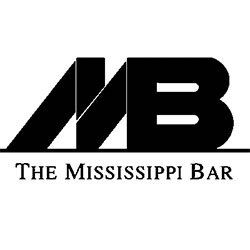PRACTICE AREAS
SUBSCRIBE TO OUR BLOG
SUBSCRIBE TO OUR BLOG
ASSOCIATIONS
Madison County Bar Association
Google Maps and judicial notice

Maps and Judicial Notice
The narrow focus of this post is on the ability to have the court take judicial notice of Google Maps and similar information from the internet.
The law on judicial notice
Rule 201(b) of the Mississippi Rules of Evidence allows a court to judicially notice a fact that is not subject to reasonable dispute because it:
(1) is generally known within the trial court’s territorial jurisdiction; or
(2) can be accurately and readily determined from sources whose accuracy cannot reasonably be questioned.
Rule 201(e) states that “[o]n timely request, a party is entitled to be heard on the propriety of taking judicial notice and the nature of the fact to be noticed.”
Google Maps and similar sources
Many courts have held that Google Maps images are facts that “can be accurately and readily determined from sources whose accuracy cannot reasonably be questioned.”
“Case law supports the proposition that information acquired from mainstream Internet sites such as MapQuest and Google Maps is reliable enough to support a request for judicial notice.” People v. Clark , 406 Ill. App. 3d 622, 633 (Ill. App. Ct. 2010).
“We take judicial notice of a Google map and satellite image as a source whose accuracy cannot reasonably be questioned for purposes of this case.” Pahls v. Thomas , 718 F.3d 1210, 1217 n. 1 (10th Cir. 2013).
“Courts have generally taken judicial notice of facts gleaned from internet mapping tools such as Google Maps or Mapquest.” Crandall v. Starbucks Corp. , 249 F.Supp. 3d 1087, 1099 (N.D. Cal. 2017).
“Courts have generally taken judicial notice of facts gleaned from internet mapping tools such as Google Maps or Mapquest.” United States v. Brown , 636 F.Supp. 2d 1116, 1124 n. 1 (D. Nev. 2009).
In Walters v. State , 206 So.3d 524, 534-535 (Miss. 2016), the Mississippi Supreme Court upheld the trial court’s ruling that Google Earth images were admissible. Although the Court did not specifically rely upon Rule 201 for its ruling, the trial court had. See Walters at 542 (Kitchens, J. dissenting).
See also :
American Atheists, Inc. v. Levy County , 2017 WL 6003077 at *1 n. 2 (N.D. Fla. Dec. 3, 2017) [the court used an image from Google Maps because is it a “website that is so well known and enjoys such broad use that it may have achieved a status akin to Webster’s Dictionary, permitting judicial notice of the accuracy of the site itself”].
United States v. Perea–Rey , 680 F.3d 1179, 1183 n. 1 (9th Cir. 2012) [taking judicial notice of a Google map and satellite image].
Magee v. Glacier Water Services, Inc. , Civil Action No. 16-4364 at *11 n. 29 (E.D. La. Jan. 30, 2017) [taking “judicial notice of the Google Street View photograph showing the location of the refill station”].
Although this post focuses upon Google Maps, the rationale of the cases cited above can be applied to a wide variety of information on the internet.
Panter Law Firm, PLLC, 7736 Old Canton Road, Suite B, Madison, MS 39110
601-607-3156
The post Google Maps and judicial notice appeared first on Panter Law Firm, PLLC.








